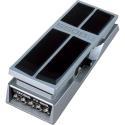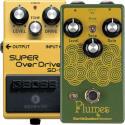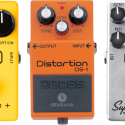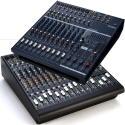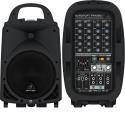Gain vs Volume - At Last a Great Explanation
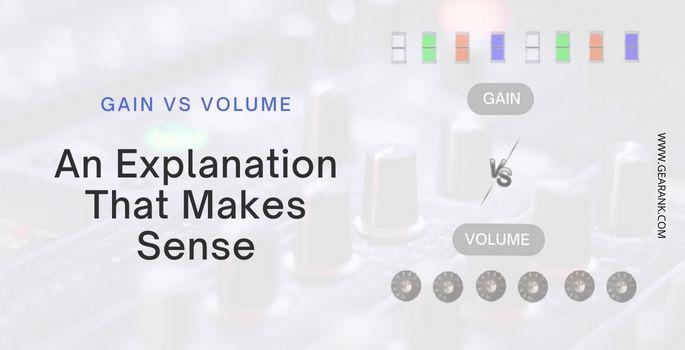
Let's face it: we've all mixed up audio gain vs volume at some point. It is confusing, especially for guitarists who use the controls to get a more fierce, overdriven sound from their amplifiers.
But what about mixers and preamps?
The problem is that these two mixer controls might look like they do the same thing but don't. Turn them anti-clockwise, and the sound becomes quieter. Turn them clockwise, and the sound becomes louder.
So, what is gain, what is volume, and what's the difference between the gain knob and volume knob?
The best way to remember the difference between gain and volume and what they do is to consider them in the correct stages you set them.
This guide explains gain and volume once and for all. If you need clarification on the two (you would be one of many), you'll find everything you need to know below.
What Is Gain in Audio? Gain and Gain Staging Explained
Gain increases or decreases the level of an audio signal, usually a signal that's being recorded into a mixing console.
The best way to think of gain is that it is your input level - not the final volume. You want a strong, noise-free signal going into your mixing console.
So the gain control is what you'll use to set the strength of that audio signal. This is the reason why these are also called input gain knobs.
This step is called the gain stage or gain staging during digital recording. If the gain staging is wrong, you can end up with one of two things: clipping or a quiet signal.
You want neither, as both result in bad audio quality on your recording. What's worse is that both of these usually can't be fixed.
If the audio gain is set too high, the input stage signal will clip, causing distortion on the recording that you can't undo.
If the gain is too low, you'll have a very quiet signal, resulting in an equally quiet (and, therefore, poor-quality) audio recording.
This means you will need to boost the recording later, introducing noise by amplifying the noise floor.
So, it's vital to get the gain control right at the earliest stage possible. Luckily, you have two things to help you: your trusty ears and the level indicators on your mixer.
Ask yourself, does the instrument or vocal sound full and tonally accurate? Listen with your ears and adjust the mic(s) or power amp if not.
Is the signal strong enough? Check the level indicators and adjust the gain control - an optimal average signal level is between -18dB as a minimum and -10dB as a maximum.
So, to set gain correctly, you need to test-run the instrument or vocal levels before recording takes. You need to account for both the quiet and loud parts (the average level of the overall dynamic range) in advance.
What Is Volume in Audio Engineering?
Volume adjusts the loudness or quietness of an audio signal coming through the speakers or headphones. As a result, the best way to think of volume is that it is your output of a sound system.
It controls the loudness of an audio signal as part of the overall song you're mixing and monitoring.
This is called the mixing stage or mixing process. It's when the volumes of all audio tracks are adjusted to blend as a listenable song, done during the recording phase and the final mixdown process.
Having the volume controls set incorrectly will result in a mix that won't just be unpleasant to listen to but hard to record.
The mix will also be what you're sending to the recording artist's headphones. It'll be hard for them to perform if some instruments are too loud and the others too quiet.
So, volume control is just as crucial as gain.
-
If a channel, such as a drum track, sounds too loud in the mix, use the volume control (a slider in most cases, but sometimes a volume knob) to bring the volume down.
-
If a mixer channel is too quiet, use the volume slider to turn up the volume.
-
Sometimes, audio engineers use audio limiters to prevent unwanted audio clipping.
Like gain, volume is also measured in dB (decibels).
Gain vs Volume - The Key Difference is signal path.
So, what's the main difference between gain and volume? Ultimately, it boils down to knowing when you should use them.
-
Use gain for adjusting the input level of a channel, i.e., what's going into the mixer or audio interface. This is also true for other gear like mic preamps and guitar amplifiers.
-
Use volume for adjusting the output level of a channel: what's going out of the mixer to the studio monitors or sound system. This can also be called Makeup Gain function on some devices like compressors.
This is called the signal path. Getting gain and volume mixed up at the input and output stages won't do your recordings or mixdowns any favors regarding sound quality.
You don't want distortion or noise affecting audio quality, as these typically can't be fixed later.
Ultimately, gain should always be set before volume since it is actually the input volume. You need to get gain right before the analog to digital converter kicks in.
Unlike volume, gain sets the strength of the digital audio signal at its first stage, also called gain staging.
As for the master volume control, this controls the overall output volume of all the mixer channels.
What's Gain and Volume on Guitar Amplifiers?
Last, how does gain and volume work on a guitar amplifier? Is it the same or different?
You might be glad that a guitar amp uses a similar signal path process as a mixer despite having different overall purposes.
A microphone preamp also uses the same path. In other words, input gain knobs set the input while the volume knob sets the output signal level.
Adjusting the gain controls on guitar amps sets the strength of the guitar signal going into the amp. On the other hand, changing the output or master volume level on the amp sets the maximum loudness coming from the amp's speaker.
An important distinction here, however, is that increasing gain on a guitar power amp can also cause a distorted signal. This is also how it works with a guitar boost pedal.
Distortion isn't ideal when setting gain levels on a mixer. Electric guitar distortion from increased gain can be a desired sound for some guitarists.
It might not generate the same sound as a distortion pedal, but setting high gain on an amp produces sound that's broader in frequency range. This is true especially for tube amplfiers.
The signal chain on guitar and bass amplifiers follows the same general rule as other audio system devices. Gain should always be set before volume for the best sound quality. And don't forget to tweak the tone control as it works with gain. Volume is an important parameter when tweaking stereo output.
Conclusion
Knowing the difference between gain vs volume, and when you should use them will drastically alter the way you record and mix. It will also help you achieve the highest quality audio recordings and mixes possible. It's essential to get the two controls right - whether you're recording an audio track at home or in a music studio!
Don't forget: Gain is key for adjusting the input of a signal going into audio hardware, like audio interfaces and mixing desks. Volume is for adjusting the output stage of a signal going out, i.e., from the mixer or audio interface to the speakers, headphones, or studio monitors.



